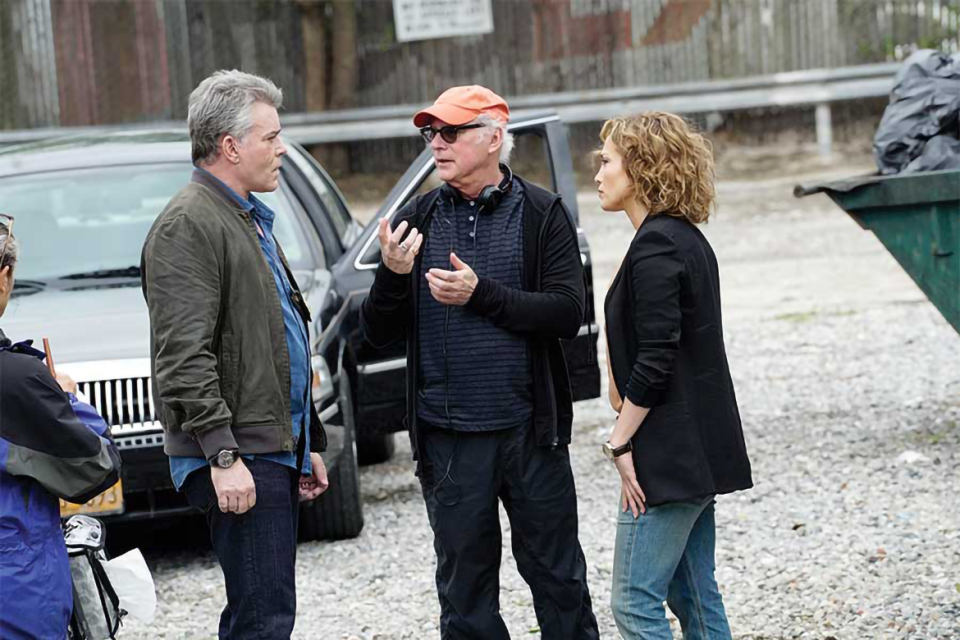A lot has changed in television since the early'90s, when Barry Levinson last worked at NBC: the internet, reality TV and streaming, to name just a few things.
But at least one TV staple has never gone out of style: cops. Twenty-three years after the debut of Homicide: Life on the Street — one of the most groundbreaking cop series of its time - Levinson has returned to the Peacock network with Shades of Blue, a twisty police drama from Universal Television that's been renewed for a second season.
The series is powered by the one-two casting punch of Jennifer Lopez as Detective Harlee Santos and Ray Liotta as Lieutenant Matt Wozniak, the gruff leader of a close-knit squad of Brooklyn detectives.
Levinson — the Oscar-winning director of Rain Man — has been an executive producer on recent fictional series like BBC America's Copper and Netflix's Borgia, and earlier this year he executive-produced the Discovery docu-series Killing Fields.
But he was looking to get more hands-on, and with a serialized show. "It allows for story arcs that are much more complex," he says, "and does what theatrical can't do: tell a story in 13 hours."
Levinson responded immediately to show creator Adi Hasak's densely layered script, which paints a morally ambiguous universe of well-meaning but corrupt detectives.
"Harlee's on the take, but it doesn't necessarily make her a villain," Levinson says. "Things happen. You get pulled into things.... What intrigued me was how these characters perceive each other, how they function on the job, how they perceive law and order. Each one has a sense of what justice is in their minds."
Lopez and Liotta's high-stakes game of cat-and-mouse is worth the price of admission. In season one, Wozniak is trying to flush out a mole, unaware that Harlee, the person he most trusts, has become an FBI informant.
As a scrappy single mother trying to provide for her daughter, Harlee is forced to cooperate with the bureau to avoid jail time. Her dance of duplicity with her suspicious boss is the show’s best asset.
In one nighttime scene at a deserted marina, Harlee peels off her dress to prove she's not wearing a wire. It's a high-risk play: if it backfires, Wozniak could kill her on the spot.
But as she strips down to bra and panties, a shamed Wozniak averts his eyes and tells her to get dressed. Only then does the camera circle around to reveal the bug hooked to the back of her bra.
Liotta (Goodfellas, Field of Dreams) brings a vulpine intensity, alternating between menace and compassion. "Everything Barry does is about making the story better," Liotta says. "The tension between Jennifer and me is all in the writing and the staging — how close Barry puts us together, how far he keeps us apart. He lets us find the scene. He gets what he wants, because he trusts his actors."
As for Liotta, "He's a big presence in his own way," Levinson says. "He's formidable enough against Jennifer that you can fear for her."
Drea DeMatteo (The Sopranos, Sons of Anarchy) costars as a detective, while Warren Kole (Stalker) plays an FBI handler with an unhealthy fixation on Harlee.
Levinson, who won a directing Emmy for Homicide's first season (he was also an executive producer), used Super 16mm film and hand-held cameras to create a ragged, gritty edge to that show. On Shades of Blue, a more naturalistic style emphasizes characters and atmosphere.
"Barry knows how to make a city into a character," says Pearlena Igbokwe, NBC's executive vice-president of drama development. "This show celebrates New York City and all of its gritty underbelly, as well as its beauty. And the cops feel like people with a shared history — we believe they've been together for years."
The ability to capture the essence of everyday lives informs Levinson's best work, especially his Baltimore quartet: Diner (1982), Tin Men (1987), Avalon (1990) and Liberty Heights (1999). Growing up, Levinson had his imagination first stoked by Paddy Chayefsky's acclaimed TV drama Marty.
"When I saw it as a kid," he recalls, "I walked around for days saying, 'Whaddya wanna do tonight, Marty? ...I don't know, Angie — whadda you wanna do?' I thought that was the greatest thing I'd ever heard."
It's not a big leap from Marty to Diner, Levinson's comedy about male friends facing adulthood. "I didn't understand it till a number of years later but that, in a sense, is what Diner is — the ordinariness of that piece of dialogue. In writing, that's what I finally went to."
The ensemble film not only launched his directing career, it became a cultural touchstone, a progenitor of shows like Seinfeld and The Office. Yet at the time, MGM saw it as a small, nearly plotless comedy with an unknown cast.
Could he get Diner made today? Levinson laughs. "I could hardly get it made then. They hated it so much, they didn't even want to release it." Levinson hopes to write another Baltimore film — "the final one," he says — and when he does, he knows where inspiration will strike.
"Mostly I'm driven by some characters that get into my head. That's what excites me, as opposed to some plot line. Too often today we rely on, 'There's a gun — there's our jeopardy.' That's never been the element that drives me."











